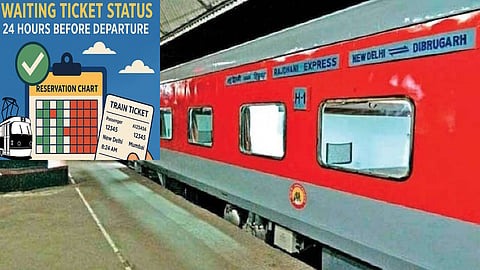
Follow WOWNEWS 24x7 on:
Updated: June 28, 2025 16:25

Indian Railways’ 25% Waiting List Cap Sparks Backlash: Experts Warn of Travel Chaos and Data Blind Spots
A recent policy shift by Indian Railways has triggered widespread concern among railway officials, reservation staff, and transport analysts. Effective June 16, 2025, the Centre for Railway Information Systems (CRIS) implemented a cap limiting the passenger waiting list to just 25 percent of the redefined capacity of each class on all trains with reservation facilities. While the Railway Ministry defends the move as a step toward passenger comfort and operational efficiency, critics argue it is both uneconomical and impractical.
Here’s a detailed breakdown of the decision, the rationale behind it, and the growing criticism it has attracted.
Key Developments and Implementation Timeline
- The 25 percent cap applies to all reservation classes, including Tatkal and remote location bookings
- The policy excludes concessional fare tickets, military warrants, and similar categories
- The decision was communicated via a circular on April 17, 2025, and implemented by CRIS on June 16
- The cap replaces earlier limits, which allowed up to 400 waitlisted tickets in sleeper class and 300 in 3AC
Railway Ministry’s Justification
- On average, less than 25 percent of waitlisted passengers receive confirmed berths
- The ministry claims the previous system led to overcrowding and allegations of revenue generation through cancellations
- Officials argue that the cap will reduce passenger uncertainty and improve travel experience
Why Experts Are Calling It Impractical
Despite the ministry’s rationale, several railway insiders and experts have flagged serious concerns:
- Reservation supervisors say the cap limits flexibility and leads to underutilized capacity when bulk cancellations occur
- A retired senior commercial officer noted that waiting lists are crucial for demand forecasting and planning special trains
- Critics argue that the cap could distort actual demand trends, making it harder to allocate resources effectively
- There are fears that the new system may encourage middlemen and touts to exploit the scarcity of confirmed tickets
Operational and Economic Implications
- Trains may now depart with vacant berths even when demand exists, leading to revenue loss
- The cap could reduce the Railways’ ability to respond dynamically to seasonal or regional surges in demand
- Officials warn that the move may disproportionately affect passengers from smaller towns and remote locations
What Comes Next
- Calls are growing for the Railway Ministry to revisit the policy and consider a more flexible, data-driven approach
- Some experts suggest reinstating higher waiting list thresholds during peak seasons or on high-demand routes
- Others advocate for better integration of real-time cancellation data to dynamically adjust waiting list limits
While the intention behind the 25 percent cap may be rooted in improving passenger experience, its real-world impact appears to be far more complex. As the travel season intensifies, the coming weeks will reveal whether the policy holds or is forced onto a different track.
Sources: The Economic Times, Devdiscourse, New Indian Express, MSN India, Railway Board Circulars via CRIS




